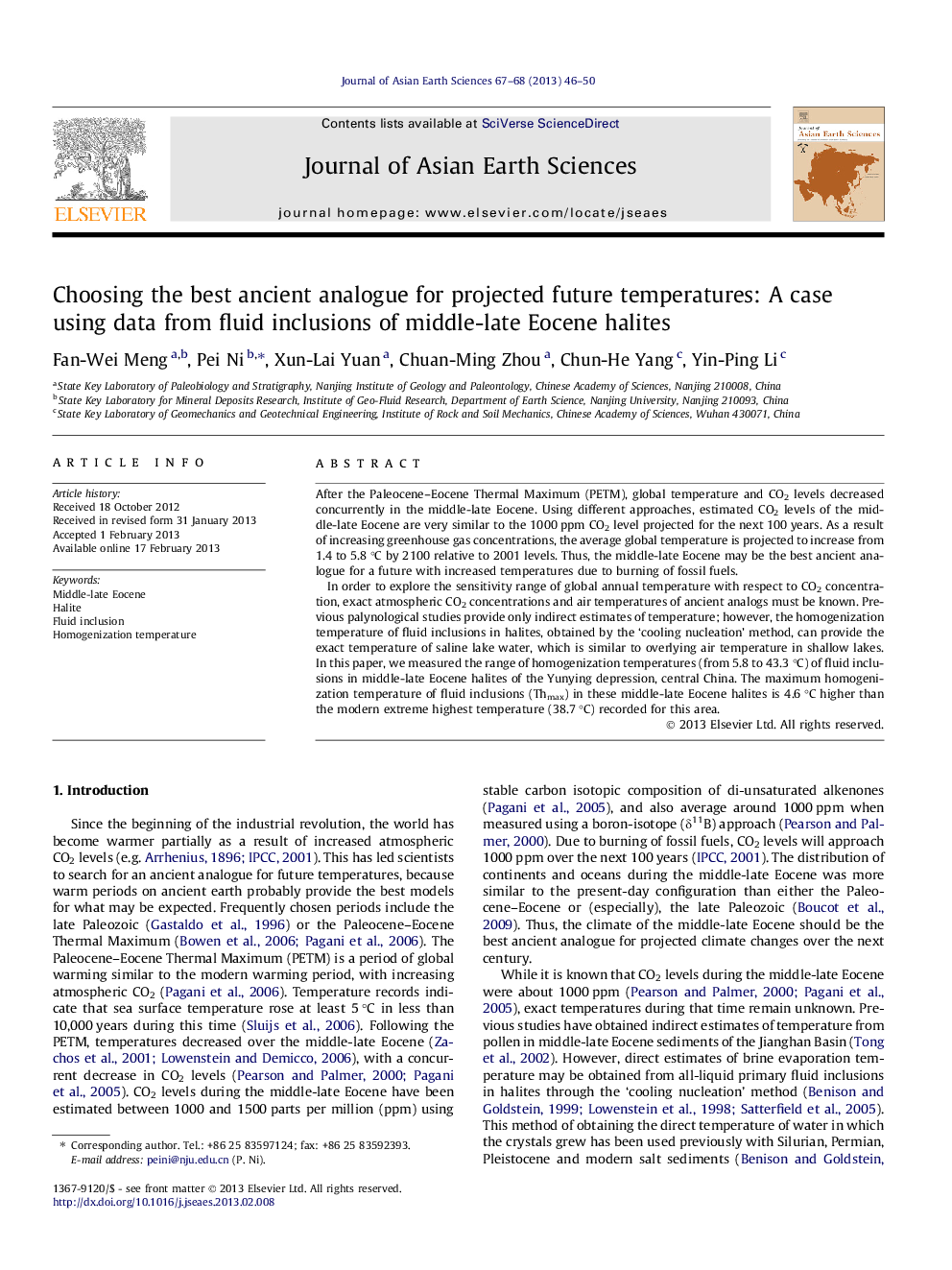| کد مقاله | کد نشریه | سال انتشار | مقاله انگلیسی | نسخه تمام متن |
|---|---|---|---|---|
| 4731125 | 1640398 | 2013 | 5 صفحه PDF | دانلود رایگان |
After the Paleocene–Eocene Thermal Maximum (PETM), global temperature and CO2 levels decreased concurrently in the middle-late Eocene. Using different approaches, estimated CO2 levels of the middle-late Eocene are very similar to the 1000 ppm CO2 level projected for the next 100 years. As a result of increasing greenhouse gas concentrations, the average global temperature is projected to increase from 1.4 to 5.8 °C by 2100 relative to 2001 levels. Thus, the middle-late Eocene may be the best ancient analogue for a future with increased temperatures due to burning of fossil fuels.In order to explore the sensitivity range of global annual temperature with respect to CO2 concentration, exact atmospheric CO2 concentrations and air temperatures of ancient analogs must be known. Previous palynological studies provide only indirect estimates of temperature; however, the homogenization temperature of fluid inclusions in halites, obtained by the ‘cooling nucleation’ method, can provide the exact temperature of saline lake water, which is similar to overlying air temperature in shallow lakes. In this paper, we measured the range of homogenization temperatures (from 5.8 to 43.3 °C) of fluid inclusions in middle-late Eocene halites of the Yunying depression, central China. The maximum homogenization temperature of fluid inclusions (Thmax) in these middle-late Eocene halites is 4.6 °C higher than the modern extreme highest temperature (38.7 °C) recorded for this area.
► Fluid inclusions in Eocene halite provide paleotemperature data for middle China.
► The paleotemperature data is similar to previously published palynological results.
► The maximum middle-late Eocene temperature is 4.6 °C higher than the modern highest temperature.
Journal: Journal of Asian Earth Sciences - Volumes 67–68, May 2013, Pages 46–50
